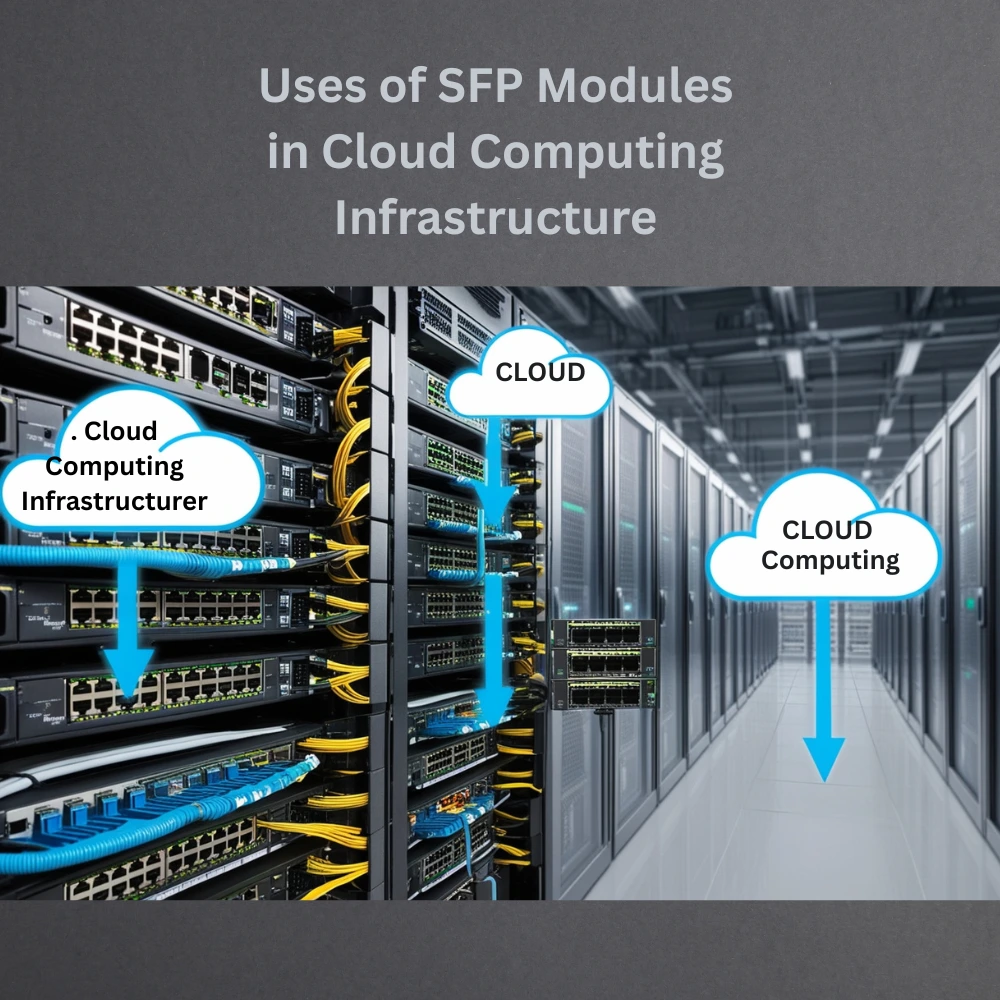In today’s rapidly evolving digital world, network systems need to be fast, flexible, and responsive to changing demands. One of the key tools that helps keep networks flexible and strong is the Small Form Pluggable (SFP) module. SFP modules are compact, hot swappable components that enable network devices such as switches, routers and servers to connect via fiber optic or copper cables.
What Is a Small Form Pluggable (SFP) Module?
A Small Form Pluggable (SFP) module is a small, hot swappable transceiver commonly used in data and telecom networks for flexible connectivity. Hot pluggable means the module can be added or removed from a device without turning off the system. This makes it easy to upgrade or replace parts of a network without any downtime.
A Small Form Pluggable (SFP) module is a tiny device that you can plug in and remove while the system is running. These modules allow you to choose the type of connection you want, fiber or copper without changing the entire device.
Why Are SFP Modules So Popular?
There are a few good reasons why SFP modules are widely used in modern networking:
- They’re compact and space saving: Their small size allows for more ports in a single device.
- They offer flexibility: You can easily swap modules to switch between different types of connections.
- They support high speeds: Different types of SFPs offer speeds ranging from 1 Gbps to over 100 Gbps.
- They’re cost effective: Instead of buying a whole new switch, you can simply change or upgrade the module.
Main Types of SFP Modules
There are several types of SFP modules, each designed for different network needs. Here’s a quick overview:
- SFP: Supports up to 1 Gbps speed.
- SFP+: Supports up to 10 Gbps.
- SFP28: Offers 25 Gbps.
- SFP56: Provides 50 Gbps.
- SFP-DD: Stands for double density, and can support 100 Gbps or more.
Now that we know what an SFP module is and how it works, let’s look at where these devices are used.
Top Uses of SFP Modules in Networking
1. Data Centers
- Act as the backbone of the internet, managing vast data from websites, apps and cloud platforms.
- SFP modules connect thousands of servers, switches and storage devices using fiber optics.
- Enable high speed communication within and between racks.
- Easy to upgrade or scale without changing core hardware.
- Reduce downtime and improve network efficiency cost effectively.
2. Enterprise Networks
- Used to connect departments, floors and offices in corporate environments.
- They can connect devices over short distances using copper cables or over long distances using fiber optic cables.
- They help keep communication fast and reliable throughout the entire company.
- Help maintain network uptime and stability.
- Provide flexible infrastructure for future upgrades.
3. Telecommunication Systems
- Used by ISPs and telecom providers for high speed internet delivery.
- They are great for sending data over long distances using fiber optic cables.
- Found in base stations, central offices and signal hubs.
- Support voice, video and data communication simultaneously.
- Help reduce latency and improve connection stability in telecom grids.
4. Campus Networks
- Connect multiple buildings within a university, school or hospital setup.
- Ensure fast and stable internet across large geographic areas.
- Support student labs, administration offices and digital learning systems.
- Reduce wiring complexity using centralized SFP supported switches.
- Enable seamless IT management from one control point.
5. Industrial and Outdoor Networks
- Used in factories, energy plants, mining or remote outdoor sites.
- Rugged SFP modules withstand high heat, cold, dust and vibration.
- Power real time systems like surveillance cameras or IoT sensors.
- Ensure stable connectivity in harsh and unpredictable environments.
- Improve safety and monitoring in mission critical operations.
6. Media Converters and Network Extensions
- SFPs help convert between fiber and copper connections.
- Extend network range beyond original cable limitations.
- Useful when integrating older copper networks with newer fiber systems.
- Reduce cost by upgrading only part of the system.
- Allow for flexible design in hybrid network infrastructures.
7. Network Upgrades and Scalability
- Allow seamless upgrades without replacing switches or core equipment.
- Support moving from SFP to SFP+, SFP28 or higher speeds as needed.
- Great for growing businesses or expanding networks.
- Avoid downtime during hardware changes with hot swappable design.
- Help scale networks to match increasing data demands.
8. Cloud Computing Infrastructure
- SFP modules are used in cloud server farms to connect virtualized systems and storage.
- Enable seamless, high-speed data flow between distributed cloud nodes.
- Support scalable cloud platforms like SaaS, IaaS, and PaaS with reliable backbone connectivity.
- Allow flexible deployment across hybrid cloud environments.
- Improve resource sharing and data availability for users worldwide.
9. Smart City and IoT Networks
- They support network connections for things like smart traffic signals, security cameras and public Wi-Fi systems.
- SFP modules help send data over long distances from groups of IoT sensors.
- Help manage real-time data from public utilities, transport and security systems.
- Rugged modules are ideal for outdoor, weather exposed locations.
- Support scalable infrastructure as IoT devices increase in number.
10. High-Frequency Trading (HFT) and Financial Networks
- Used in stock exchanges and financial data centers where low latency is critical.
- Fiber based SFP modules reduce delays in order execution and data sync.
- Help institutions comply with regulatory standards for speed and transparency.
- Allow quick infrastructure upgrades to maintain a competitive edge.
- They help keep financial transactions safe and dependable, even between different locations around the world.
Key Benefits of Using SFP Modules
To sum up, here are some of the biggest benefits of using SFP modules in modern networking:
- Flexibility: Easily switch between fiber and copper or change speeds.
- Hot swappable: No need to turn off devices when replacing modules.
- Cost saving: Upgrade connections without replacing full systems.
- Scalability: Support growing network demands over time.
- Long distance support: Use fiber optics for connections across buildings or cities.
- Reliability: Industrial-grade options work in tough environments.
Tips for Choosing the Right SFP Module
When selecting an SFP module for your network, keep the following in mind:
- Match speed and distance: Choose the right type (SFP, SFP+, etc.) based on how fast and how far your data needs to travel.
- Check compatibility: Make sure the module is compatible with your switch or router.
- Select proper cable type: Know whether you’re using single-mode or multi-mode fiber, or copper.
- Look for quality brands: Avoid low-quality modules that may cause connection problems or fail quickly.
Final Thoughts
Although SFP modules are tiny, they’re essential to today’s network infrastructure. From powering data centers to extending connections across campuses and industrial sites, these devices help make networks faster, more reliable and easier to manage. As the demand for high speed data continues to grow, the use of SFP modules will only become more important.
Whether you’re a network engineer, IT manager or someone simply curious about how the internet works also understanding the uses of small form pluggable modules gives you insight into the backbone of modern connectivity.




